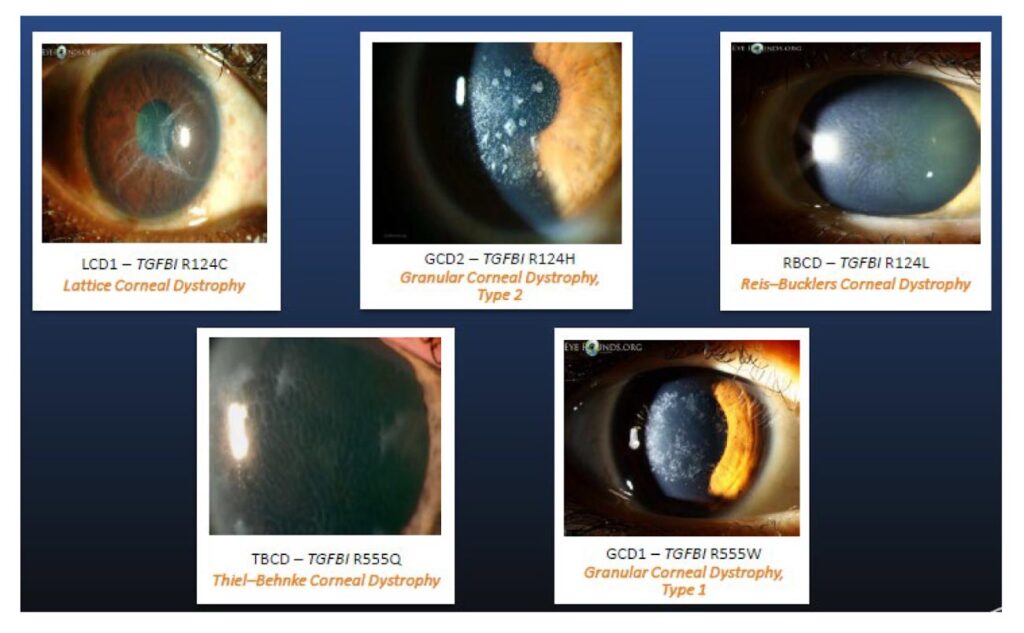[Advertorial]
For those seeking a life free from the discomfort of glasses or contact lenses, LASIK procedure has become a beacon of hope. LASIK has revolutionized the field of ophthalmology, offering a safe, precise, and efficient solution to improve visions around the world. In this article, we will delve into LASIK – how it works, its risks, and the importance of tests before LASIK to prevent diseases such as corneal dystrophy.
Table of contents:
- What is LASIK
- Is LASIK safe for everyone?
- About Corneal Dystrophy
- Types of Corneal Dystrophy
- Who is at risk of Corneal Dystrophy
- Corneal Dystrophy and LASIK Correction
- Is there a cure for Corneal Dystrophy
- Why is a genetic test important for patients?
- What are the other tests I need to undergo before LASIK?
What Is LASIK?
LASIK or Laser-Assisted In Situ Keratomileusis, is a surgical procedure that corrects refractive errors and improves vision. It is primarily used to treat common vision problems such as nearsightedness, farsightedness, and astigmatism.
During a LASIK procedure, a specialized laser is used to reshape the cornea (the transparent front part of the eye) in order to correct blurry vision. By altering the shape of the cornea, LASIK helps to redirect light rays onto the retina (the light-sensitive layers of nerve tissue at the back of the eye that receives images) accurately, allowing for clearer and sharper vision.
Is LASIK Safe For Everyone?
While LASIK is a widely performed procedure, it may not be suitable or safe for everyone. This is why several tests should be performed before a LASIK procedure including:
- Medical History Review
- General Eye Health Assessment
- Dry Eye Testing
- Corneal Topography to measure the curvature of the cornea and identify any irregularities
- Pachymetry or a test that measures the thickness of the cornea
- Refraction to identify nearsightedness (myopia), farsightedness (hyperopia), or astigmatism.
- Dilated Eye Examination to examine the retina, optic nerve, and other structures at the back of the eye to ensure they are healthy and free from any issues.
- Tear Film Evaluation to evaluate the quality and quantity of tears
- Pupil Size Measurement
Several factors may disqualify an individual from being a good candidate for LASIK. For instance, individuals with pre-existing eye conditions such as severe dry eye syndrome, corneal thinning disorders, or corneal dystrophy.
About Corneal Dystrophy
Corneal Dystrophies are eye diseases in which a specific grey-white protein accumulates in the cornea. It is a genetic condition that runs in families.

Types Of Corneal Dystrophy
There are several types of corneal dystrophy. Some common types and their symptoms are:
- Granular corneal dystrophy type 1 (GCD 1) – Usually occurs in childhood, with progressive loss of vision. It starts as small, dispersed, greyish-white deposits that develop and progress in the centre of the cornea. It is more common in Americans and Europeans.
- Avellino Corneal Dystrophy (GCD 2 or ACD) – Usually occurs between the ages of 10 and 20. Its symptoms are white deposits that begin to form in the centre of the cornea, increasing in number and size. ACD is prevalent in Korea.
- Lattice corneal dystrophy type 1 (LCD 1) – Symptoms appear around the age of 10, and visual abnormalities continue to progress thereafter. Symptoms include egg-shaped, greyish-white deposits on the cornea that develop as dots, which continue to increase in number and size. It accounts for 14% of patients with corneal dystrophy according to the American Journal of Ophthalmology 2000.
- Reis-Bücklers’ corneal dystrophy (RBCD) – Occurs between the ages of 10 and 20 with greyish-white deposits in the cornea beginning to form and progress. From around the age of 2 years, painful corneal damage may occur.
- Thiel-Behnke corneal dystrophy (TBCD) – Symptoms usually appear in childhood or teenage years, and then the visual acuity continues to progress.
Who Is At Risk For Corneal Dystrophy?
Most corneal dystrophies are genetic and individuals with a family history of the disease are at risk. It may also appear at any age. In some cases, corneal dystrophy may also present no symptoms.
Worldwide, 63 gene mutations have been reported to be associated with corneal dystrophy. Among them, Avellino Corneal Dystrophy or GCD 2 is the most frequently reported worldwide. It is estimated that more than 57,000 people have genetic mutations in Korea.
Corneal Dystrophy & LASIK Correlation
According to a study about Avellino Corneal Dystrophy after LASIK, even though recent clinical studies have demonstrated the safety, predictability, and stability of LASIK surgery, its safety in various ophthalmic conditions has yet to be determined (1).
In some cases, LASIK surgery may worsen the symptoms or progression of corneal dystrophy, leading to potential complications. Many reports have demonstrated the exacerbation of Avellino Corneal Dystrophy or GCD2 after treatment with LASIK (2). It increases the deposition of corneal opacities and is contraindicated in patients with GCD2 (3)
Furthermore, in a study (4) involving 7 patients with Avellino dystrophy gene, it was found that corneal opacities appeared 12 months or more after LASIK surgery.
Is There A Cure For Corneal Dystrophy?
So far, there is no cure for corneal dystrophy. That is why it is crucial for anyone considering eye surgery to undergo a test before LASIK such as a genetic test for corneal dystrophy.
Why Is A Genetic Test Before LASIK Important For Patients?
Genetic testing is recommended before vision correction surgery such as LASIK, even for individuals with no family history of corneal dystrophy. This is because even if no family member or relative has the corneal dystrophy mutation, the mutation can be passed on to the next generation. Moreover, some people with corneal dystrophy experience no symptoms during the early stages.
What Are The Other Tests I Need To Undergo Before LASIK?
In conclusion, LASIK surgery may exacerbate corneal dystrophy. Therefore, it is crucial to do genetic testing and have a pre-evaluation before undergoing LASIK surgery.
Contact Us
If you have any concerns about corneal dystrophy or are interested in genetic testing for corneal dystrophy, you may reach out to us on WhatsApp
References
- Exacerbation of Avellino Corneal Dystrophy After Laser In Situ Keratomileusis by Xiu Hua Wan, M.D., Hyun Chae Lee, M.S., R. Doyle Stulting, M.D., Ph.D., Terry Kim, M.D., Seung Eun Jung, M.S., Moon Jung Kim, M.D., and Eung Kweon Kim, M.D., Ph.D.
- Copeland & Afshari. Principles and Practice of Cornea, Vol. 1. pg. 777
- Traboulsi, Elias. Genetic Diseases of the Eye, 2nd Edition. pg. 267
- Avellino Corneal Dystrophy after LASIK by Roo Min Jun, MD,Hungwon Tchah, MD, Tae-im Kim, MD, R. Doyle Stulting, MD, PhD, Seung Eun Jung, MS, Kyoung Yul Seo, MD, Dong Ho Lee, MD, Eung Kweon Kim, MD, PhD
Protect against cancer, cardiovascular disease, and other chronic diseases with regular health screening. Compare and shop for health screenings from Singapore and regional healthcare providers at a single convenient platform - shop.health365.sg
This article is informative only and is not intended to be a substitute for professional medical advice, diagnosis, or treatment, and should never be relied upon for specific medical advice.







